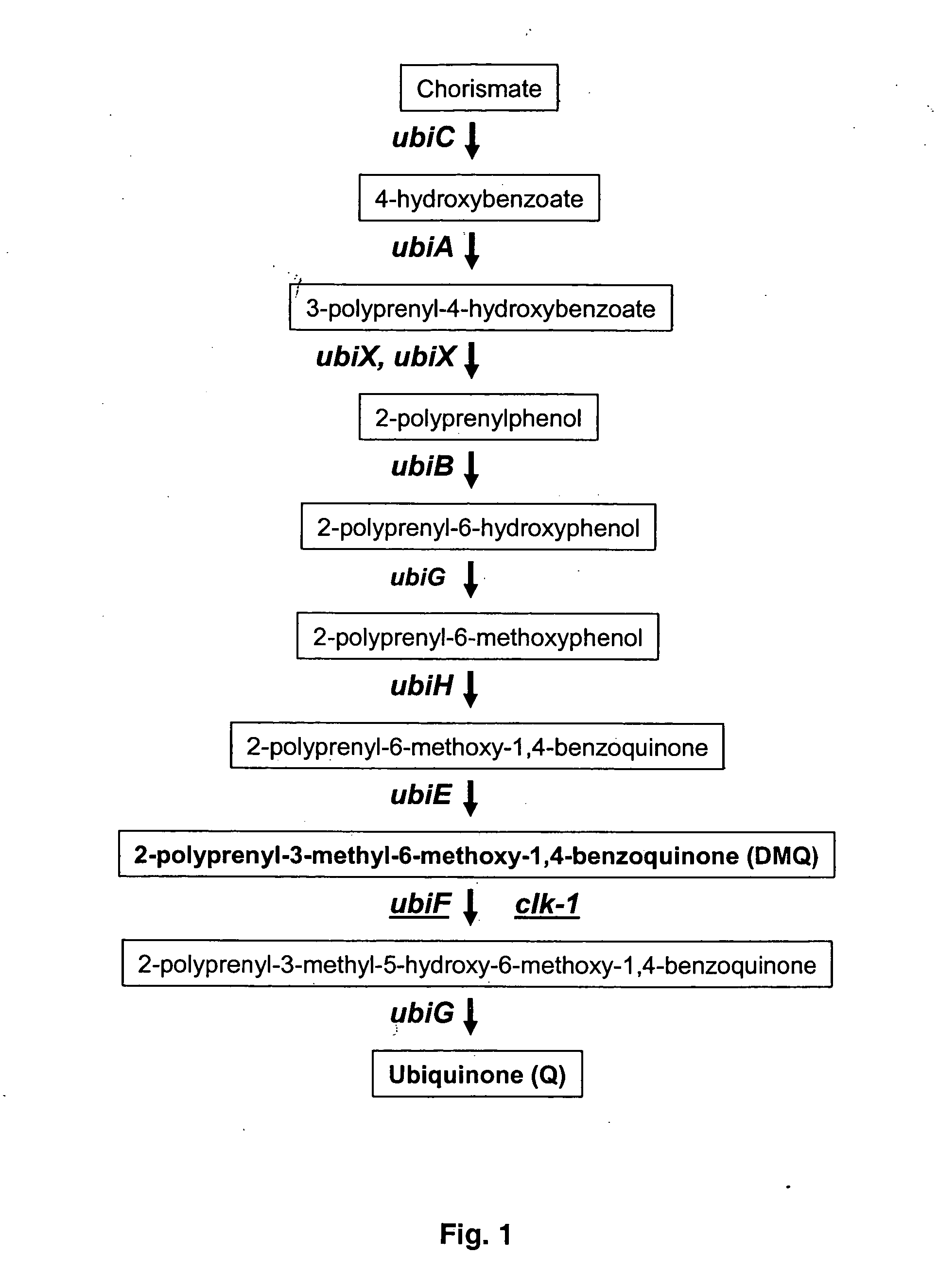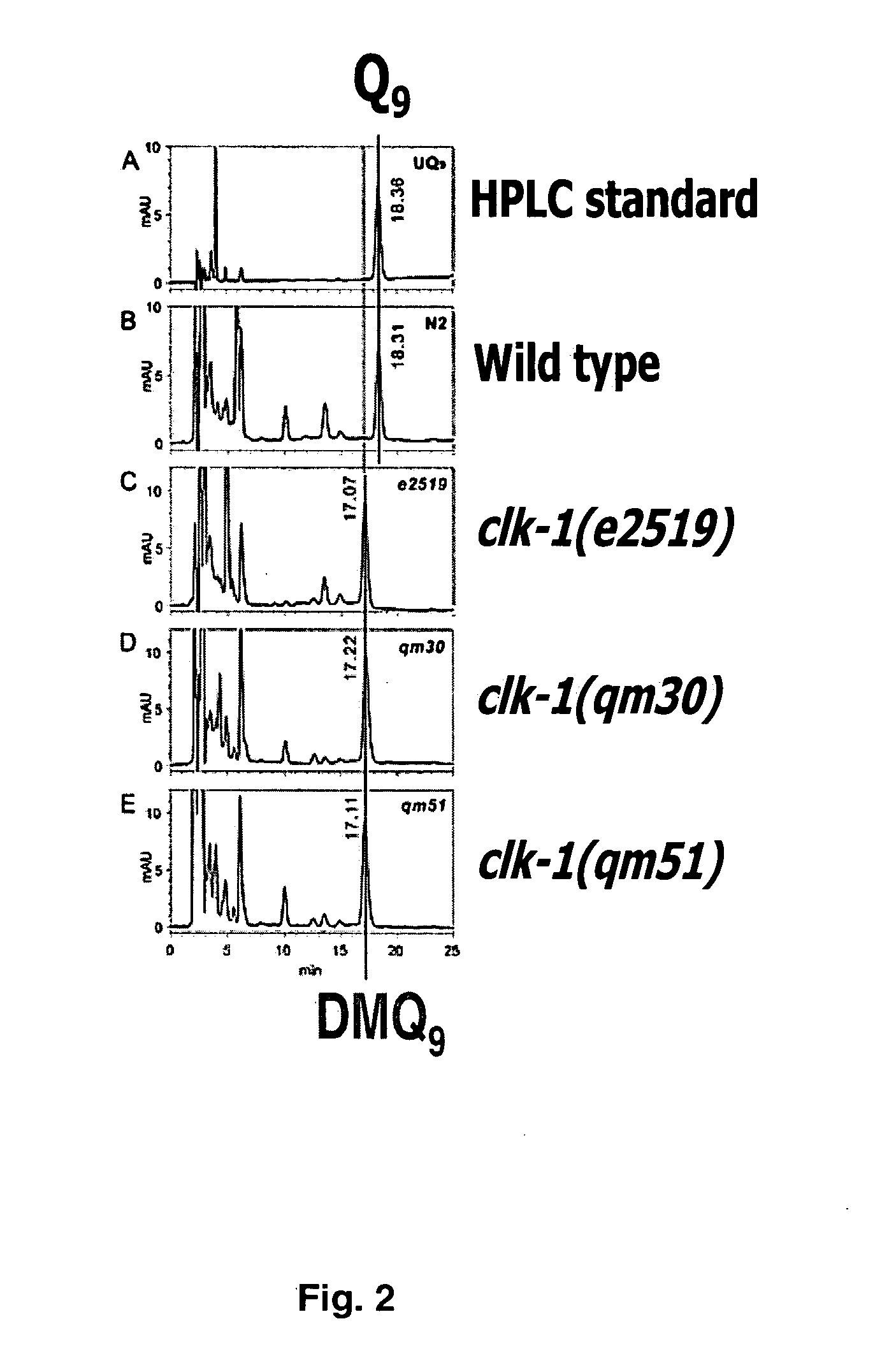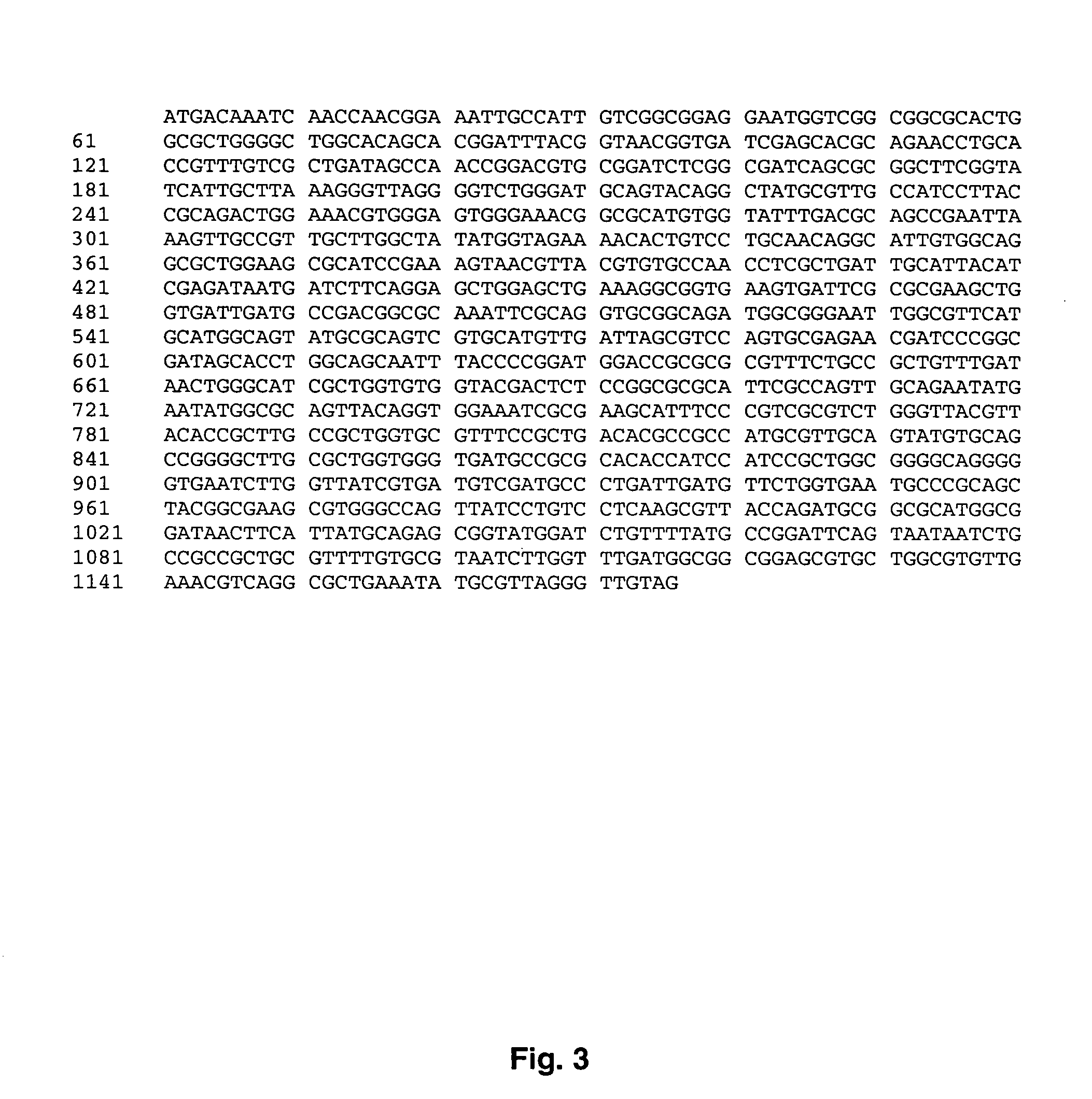Method for identifying modulators of CLK-1 and UbiF activity
a technology of ubif and clk-1, which is applied in the field of identifying modulators of ubif and ubif activity, and modulators of ubif and ubif enzyme activity, can solve the problems of insufficient dietary q as a quinone source and their pharmacological profile is far from ideal, and achieves low amino acid similarity and high probability of identification
- Summary
- Abstract
- Description
- Claims
- Application Information
AI Technical Summary
Benefits of technology
Problems solved by technology
Method used
Image
Examples
Embodiment Construction
[0034] The present invention relates to the screening of compounds that modulate the activity of enzymes that are involved in ubiquinone biosynthesis in eukaryotes and prokaryotes, in particular, enzymes that carry out hydroxylation of demethoxyubiquinone. The methods of the invention are used to identify therapeutic compounds useful in the treatment of a variety of diseases and conditions, including metabolic diseases and infectious diseases.
[0035] As used herein, the term "Q" refers to ubiquinone, which is also known as coenzyme Q. The term includes ubiquinones of any polyprenyl side chain length. Typically, the side chain length ranges from 6 to 10 isoprenoid groups. To indicate a ubiquinone having a specific length of polyprenyl side chain, a subscript is used, e.g., Q.sub.9 denotes ubiquinone having a side chain of 9 isoprenoid groups which is found in C. elegans and humans; Q.sub.8 has a side chain of 8 isprenoid groups and is found in E. coli.
[0036] As used herein, the term "...
PUM
 Login to View More
Login to View More Abstract
Description
Claims
Application Information
 Login to View More
Login to View More - R&D
- Intellectual Property
- Life Sciences
- Materials
- Tech Scout
- Unparalleled Data Quality
- Higher Quality Content
- 60% Fewer Hallucinations
Browse by: Latest US Patents, China's latest patents, Technical Efficacy Thesaurus, Application Domain, Technology Topic, Popular Technical Reports.
© 2025 PatSnap. All rights reserved.Legal|Privacy policy|Modern Slavery Act Transparency Statement|Sitemap|About US| Contact US: help@patsnap.com



